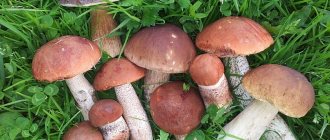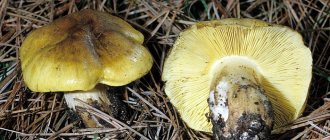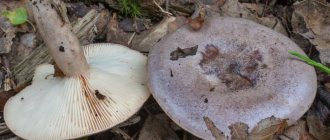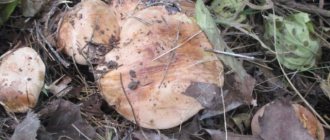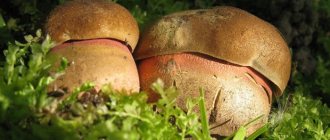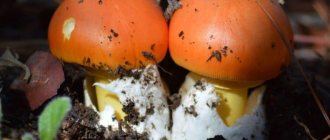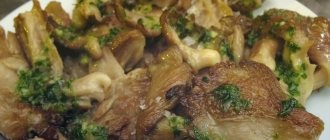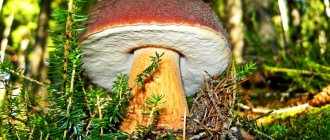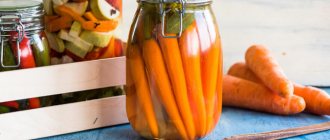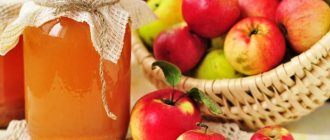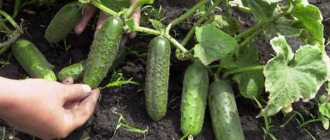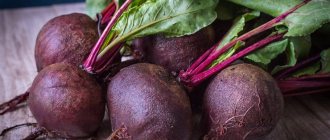Polish mushroom (pansky, brown, chestnut flywheel) is a type of mushroom belonging to the Boletaceae family, the genus Borovik. This species received its name due to massive export from Poland to Western Europe.
It is found in coniferous forests, on acidic, sandy soils in lowlands and mountains, at the base of trees, on litter, in moss. Distributed in Europe, including the Baltic states, Belarus, Western Ukraine, Poland, the Caucasus, Far East, Siberia, Central Asia, and the northern temperate zone. Chestnut flywheel is edible, suitable for pickling, drying, freezing. The mushroom is a supplier of sugars, enzymes, easily digestible proteins, essential oils, vitamins B, PP, macro- and microelements, and improves the digestibility of food.
Interestingly, vegetarians, due to their rich amino acid composition, use flywheel as a substitute for red meat (beef).
Description
A representative of the Boletaceae family grows singly or in small groups. Active growth occurs between June and November. Polish mushroom can be found exclusively in ecologically clean areas. It does not tend to accumulate poisons or radiation, so even very large fly mushrooms can be eaten. The highest yield occurs in September.
Content:
- Description
- Twin mushrooms
- How to recognize poisoning?
- Benefits and harms
- How to clean and cook?
- Conclusion
In appearance, the Polish mushroom is similar to the white one. It has a fleshy cylindrical or tuberous stalk, reaching up to 4 cm in diameter and up to 14 cm in height. The color varies from brown to light brown. The closer to the cap, the lighter it is. The structure of the leg is smooth, fibrous, dense. When pressed, it acquires a bluish tint, which then turns brown.
The cap is hemispherical, convex, rolled at the edges, reaches 12 cm in diameter. It becomes flatter with age. The color varies from dark brown, chestnut to light red-brown. In young specimens the skin on the cap is velvety and dry, in old specimens it is smooth, after rain it becomes covered with a sticky substance, becomes slippery and difficult to separate. The tubular layer is initially white, but turns yellow over time. In older specimens it is greenish. When damaged (cut, pressed) it turns blue.
Olive-brown spore powder.
The pulp of the Polish mushroom has a strong, dense, fleshy structure. It gives off a pleasant smell and a sweetish taste. At a young age it is hard, but becomes softer as it grows.
Currently, breeding chestnut flywheel at home has become a popular activity. Under favorable conditions, the harvest can be harvested already the next year after planting mushroom spores in the substrate. Fruiting lasts up to 5 years. Main growth conditions: nutrition (sugar can be used), acidic soil. Lime is used to disinfect soil.
How to cook Polish mushroom
To begin with, the Polish mushroom will require primary processing. It is very important to know the description and recipes of any mushrooms before cooking and eating them. After returning from the forest, the first thing you need to do is clean and rinse them. Be sure to remove all wormy spots, areas of mycelium and debris with leaves before starting cooking.
Afterwards, you need to carefully rinse the Polish mushrooms in running water, and then soak in cold water with added salt. Next, you need to let them sit for about 5 hours. During this time, they will get stronger and will not be so brittle, the worms, if they are left somewhere, will die, and the remaining debris will also settle to the bottom of the vessel. After this time, rinse them several more times, constantly replacing dirty water with clean water.
Now it makes sense to familiarize yourself with how and how much to cook Polish mushrooms. The first step is to pour them into a large pan, preferably enameled. It is advisable to use a large pan so that they are not crowded. Next, they are filled with water and placed on fire until the water begins to boil.
“Poles” make delicious soups, hot dishes and snacks. They are added to sauces and salads. Pan mushrooms and boletus mushrooms have a similar taste, so they are prepared the same way.
Mushrooms can be:
- cook;
- fry;
- bake;
- marinate;
- salt;
- dry.
These dishes can be included in the Lenten menu, served with vegetables and cereals.
Twin mushrooms
Autumn is the season for collecting forest grain. Every year, at the end of summer, summer residents put things aside and go to the nearest forest in search of mushrooms. Fragrant and beautiful to look at, they can be deadly. The toxins of various inedible mushrooms have different effects on the human body. Often untimely and insufficient assistance leads to the death of the victim. As a result, he may die in no time. The highest mortality rate from mushrooms was recorded among the rural population, where transportation of patients and primary medical care are difficult.
Children are more susceptible to the effects of toxins. Therefore, in case of mushroom poisoning, the survival rate is higher in adults. In this case, human health largely depends on the speed of provision of first aid.
Popular and delicious dishes from Polish mushrooms
Dishes prepared using wild mushrooms, especially freshly picked ones, will always be a table decoration. Although it will take time to create a culinary masterpiece, the result will be worth the effort.
Fried
Heat vegetable oil in a deep frying pan and add mushrooms there (you will need 1-1.5 kg). They will release juice, so you need to stir them until the liquid has completely evaporated. Next, add two onions cut into half rings, spices, bay leaf and fry until golden brown.
Polish fried mushrooms
Just before finishing, add finely chopped garlic cloves, parsley and butter (30 g). Mix well, remove from heat and cover with a lid.
Stewed
For the recipe you will need to fry a finely chopped head of garlic, an onion and 50 g of bacon. Add 500 g of mushrooms and simmer for half an hour, adding water if everything boils away. Next, add finely chopped tomatoes or cherry tomatoes to taste, simmer for 10 minutes, stirring occasionally.
Stewed mushrooms
Pour in 150 ml of dry white wine and 200 g of medium fat sour cream. Add spices and simmer for another 10 minutes. Remove from heat, sprinkle with herbs and serve with any side dish.
Fry 150 g of brisket in a dry frying pan until golden brown. You can replace it with bacon in the same proportions. Remove the brisket and add finely chopped onion to the pan. Add vegetable oil and fry until transparent. Add mushrooms and simmer until golden brown.
Beat the prepared onion-mushroom mixture in a blender with vegetable broth, diluting it to the consistency of soup. Boil over low heat, add 200 g of cream, spices, brisket and bring the soup to a boil. Grate 100 g of processed cheese, stir until dissolved and turn off the heat.
Mushroom soup
For the bread plate, cut off the top of round bread and scoop out the pulp. Grease the inside with vegetable oil and bake on the grill or in the oven until crispy. Pour the soup into bowls and serve, sprinkled with herbs.
Salads
To prepare a puff salad, place in layers in a prepared deep container:
Salad with mushrooms
Let the salad brew for about 12 hours in the refrigerator. The quantity of products depends on the size of the container and the desired thickness of the layers.
How to recognize poisoning?
The first symptoms of damage to the body by poisonous mushrooms are:
- nausea, vomiting, diarrhea;
- stomach ache;
- gastroenteritis or gastroenterocolitis;
- convulsions;
- increased body temperature;
- clouding of consciousness, hallucinations;
- cold sweat.
In case of hepatonephrotoxic mushroom poisoning, the first symptoms are gastroenterological in nature, develop within 6 hours after consumption, and gradually worsen as liver hepatocytes are damaged.
Chestnut moss fly doubles:
- Variegated: Has a yellow-brown cap that cracks with age, revealing red-pink tissue.
- Green: has a brownish-green cap and a tubular layer, a light stalk. When cracked, it reveals yellowish tissue.
- Brown: a characteristic feature of the specimen is the cap in brown shades, through the cracks of which you can see the whitish fabric.
- Satanic (parasitic). Visually resembles a Polish mushroom. The pulp is white. When cut, it turns red or blue and is poisonous.
To avoid mushroom poisoning, each cut specimen is subject to visual inspection again. It is important to check all the characteristics of the collected species. Fly mushrooms are often confused with gall or pepper mushrooms, which have a bitter taste that is enhanced by heat treatment. Consumption of such a product is dangerous to health.
Remember, picking mushrooms should not be taken carelessly, otherwise the price of a mistake could be a person’s life. The mortality rate of forest bread poisoning is frightening. Every year this figure increases by 1% worldwide.
How to fry Polish mushroom with sour cream. Cooking steps:
1) This recipe contains Polish mushrooms. They are prepared according to the same principle as other forest mushrooms: peeled, washed, boiled in salted water. The Polish mushroom turns purple-green when washed, but when cooked, its color becomes more attractive. I recommend changing the water several times during cooking and skimming off the foam.
2) Drain the water (by the way, it can be used to prepare mushroom soup). Place the cooked Polish mushroom in a frying pan, greased with vegetable oil and well heated. Cover with a lid and fry over low heat for about 20 minutes. Mushrooms must be stirred periodically. This must be done carefully; during frying, they shoot violently and, if they jump away, they can seriously burn.
3) Cut the onion into large cubes. Cover the mushrooms with onions, cover with a lid and simmer for a while, then stir and continue cooking with the lid closed.
4) When all the liquid in the pan has evaporated, sprinkle the mushrooms with flour and stir quickly.
5) After this, immediately cover with sour cream. To cover with a lid.
6) As soon as the sour cream begins to thicken, the lid opens. She is no longer needed. The dish is ready when the mushrooms are lightly golden and the sour cream is baked.
Benefits and harms
Chestnut flywheel is a low-calorie product, 100 g of which contains 19 kcal, 1.7 g of protein, 0.7 g of fat and 1.5 g of carbohydrates.
The mushroom contains 15 amino acids, vitamins B, PP, manganese, selenium, sodium, phosphorus, potassium, copper. Tannin gives this representative the medicinal properties that green tea has. Chemical composition of the Polish mushroom
| Name | Nutrient content per 100 g of product, mg | |
| Vitamins | ||
| Choline (B4) | 38,7 | |
| Niacin (PP) | 7,956 | |
| Pantothenic acid (B5) | 3,294 | |
| Riboflavin (B2) | 0,359 | |
| Pyridoxine (B6) | 0,21 | |
| Thiamine (B1) | 0,145 | |
| Folic acid (B9) | 0,021 | |
| Macronutrients | ||
| Potassium | 320 | |
| Phosphorus | 151 | |
| Sodium | 19 | |
| Microelements | ||
| Copper | 144 | |
| Manganese | 0,21 | |
| Selenium | 0,0036 | |
The water capacity in the mushroom reaches up to 90%.
Advantages of chestnut flywheel:
- cleanses the body of toxins;
- improves wrinkles, the condition of hair, nails, and the functioning of the nervous system;
- increases mental activity, anti-cancer immunity;
- inhibits the negative effects of caffeine;
- reduces blood pressure and the risk of developing atherosclerosis;
- normalizes digestion processes;
- relieves swelling due to bruises, abrasions, kidney failure (has a diuretic property);
- promotes weight loss, relaxation and calm;
- accelerates the resorption of wen, warts, hematomas, activates metabolism;
- balances the body's nutrition.
Properly processed pan mushroom does not harm human health, but, on the contrary, improves its functioning. It is recommended to collect fruiting bodies away from factories and highways. Contraindicated for people with chronic diseases of the liver, stomach and individual intolerance to mushrooms.
Recipe for fried mushrooms with potatoes and onions
To prepare a delicious dish, you will need the following ingredients:
- 1 kg of moss mushrooms;
- 500 g potatoes;
- 1 tbsp. l. sunflower oil;
- bulb;
- salt.
For frying, butter or vegetable oil can be used. Fat also works.
Description of preparation step by step:
- Before frying, it is necessary to boil the mushrooms. There is no need to cook for a long time; they should cook for 15-20 minutes.
- In a heated frying pan, you need to place the fruits, which are first cut into small pieces. But if you wish, you can add them entirely.
- They need to be fried evenly, and for this you should stir constantly.
- At this time, you should peel and cut the potatoes and onions into cubes (in the form of half rings).
- When the Polish mushroom is fried, add potatoes and onions. The products must be fried together until cooked.
- Salt the dish. If desired, add bay leaf and a couple of black peppercorns.
- To prevent the roast from burning, place the pan in the oven, preheated to 150 degrees. It is left there for 15 minutes.
This completes the preparation. The result is a tasty and nutritious dish that everyone is sure to enjoy. If desired, you can serve it with pickled cucumbers and tomatoes.
Roast Polish mushrooms with potatoes and onions can also be prepared from dried mushrooms. To do this, they must first be soaked in milk and cooked in accordance with all stages.
Important! During the frying period, the fruiting bodies release a lot of liquid, so the cooking time is affected by the number of fruits and the heating mode. Typically frying is 45-60 minutes.
How to clean and cook?
After confirming that there is a Polish mushroom in front of you, it is cut off at the base of the stem. Under no circumstances should the flywheel be torn off, otherwise the mycelium may be damaged. When collecting this species, you should remember that when you press on the porous layer of the cap, after 5 seconds it becomes bluish in color. When cut, the leg also turns blue, then its color changes to brown, and after a while the flesh becomes lighter.
When collecting, you should pay attention to the worminess of the mushroom. If this symptom is present, it is optimal to refuse to use such flywheel. Severely overripe, spoiled, wormy specimens can cause eating disorders.
When going in search of forest bread, you should arm yourself with a wicker basket. In plastic bags and buckets, mushrooms overheat and cake, which speeds up their spoilage.
After collection, you need to quickly process the flywheels. To do this, they are poured onto a newspaper, cloth or mat in one layer and sorted. If this is not done within two hours, worms begin to settle in the mushrooms.
The chestnut moss is easy to clean. To do this, it is enough to remove debris and dirt from it, cut out the wormy areas and the spongy part with spores (in very old mushrooms). The cleaned specimens are washed and left in water for 20 minutes. After this, they are washed again and subjected to heat treatment.
During boiling, mushrooms form a lot of foam, so it is recommended to cook them in a large saucepan in small portions. Small specimens can be cooked whole, but large ones are better cut into 2-4 parts.
Thus, pre-prepared mushrooms are dipped into boiling water. Cooking time is 10-15 minutes. The decoction obtained after processing the moss mushrooms is poured out. Under no circumstances should it be used for cooking, since all toxic substances from the fruiting bodies “leave” into it.
Pre-processed mushrooms are cooled, then they are fried, stewed, frozen or pickled.
Boiled moss mushrooms are cut into slices and fried in fresh sour cream or vegetable oil for 7 minutes. During the cooking process, the dish is seasoned with salt and pepper.
For marinating, boiled pan mushrooms are placed in jars, which are pre-sterilized. The taste of the mushrooms is determined by the marinade. To prepare it you will need water, salt, sugar, vinegar, cloves, bay leaf, black pepper. The finished marinade is poured into jars. Then they are rolled up, cooled, and put away for storage.
Preparation for the winter
If you are lucky enough to harvest a large harvest of forest delicacies, you can provide yourself with aromatic and tasty dishes for the whole winter. It is important to know how to make blanks correctly.
Pickled
You can start marinating immediately after boiling the mushrooms. To do this, in parallel with the processing process, it is necessary to begin preparing the marinade. To prepare it, dilute two tablespoons of salt, one tablespoon of 9% vinegar per liter of water, put three peas of allspice and black pepper and 1 piece of cloves and bay leaf. Put on fire and boil.
Polish marinated mushrooms
In order to roll up mushrooms for the winter, you need to prepare the lids and jars using any method of sterilization. Boiled moss mushrooms are placed in jars, compacted slightly. Do not reach the top; it is better to stop at the place where the can begins to narrow. Without removing the marinade from the stove, carefully pour it into the containers to the very top. Close with lids, turn over and wrap with a blanket.
Marinated preparations are infused for about 40 days. To prepare them for use, it will be enough to season the product with oil and garlic/onion.
You may be interested in:
How to distinguish whether a Polish mushroom is edible or not: useful tips (22 photos) An interesting and most striking representative of the genus of fly mushrooms is the Polish mushroom. It belongs to the second category...Read more...
Salty
The chestnut mushroom is salted using the hot method. For this purpose, only young and strong specimens are used so that the cap does not lose its crunch during storage.
Salted mushrooms
Mushrooms for hot pickling are dipped in a boiling salt solution (100 g of salt per 2 liters of water) and boiled for 15 minutes. After cooling, compact them into sterile jars, sprinkle with salt and spices of your choice, pour in the brine in which the mushrooms were boiled and add 2 tbsp. spoons of vegetable oil on top. Cover tightly with lids and leave to salt in a cool room for a month.
Frozen
To freeze boletus mushrooms, you need to let them drain well after cooking.
Next follow the recommendations:
- It is advisable to pack in such a volume that it is enough for one preparation;
- cannot be re-frozen;
Frozen mushrooms - at a temperature of –18°C they can be stored for up to a year, at a temperature of –10°C the shelf life is a month;
- Store in a separate compartment from products with a strong odor.
Dried
Drying is an ideal way to process and store mushrooms, since the volume is reduced by 10 times, but the aromas and taste properties are only enhanced. And the shelf life is significantly higher than that of other types of processing.
Only fresh, strong mushrooms without wormholes are suitable for drying. They need to be cleaned with a brush to remove dirt and needles, cut off the remaining mycelium and cut into slices up to one centimeter. You can dry it in the oven, in the sun or in special dehydrators:
- For the oven, you need to lay out the slices on baking sheets and send them to dry for 2.5 hours at +50 degrees, then take them out, stir, raise the temperature to +70 degrees for 2 hours, then lower them to +60 degrees and hold for another 3 hours.
Drying mushrooms in the oven - In electric ovens, it is advisable to turn on the fan mode. The oven door should be slightly open; you can insert a wooden spatula into the door to create a gap. Allow dry mushrooms to cool and seal in an airtight container or moisture-proof bag.
- To dry in the sun, prepared slices are strung on a fishing line or thread so that they do not touch each other, covered with a thin layer of gauze to protect from dust and hung under a canopy in the open sun. It will take 5-7 days to dry, but after 2 days you should check thin or small pieces so as not to overdry. You can determine the readiness of the mushroom by touch; it should be dry, slightly bend, break, but not crumble.
Drying mushrooms on a string - In dehydrators, mushrooms are laid out in one layer on special trays and dried for 2 to 6 hours, depending on the thickness of the slices.
You may be interested in:
Description and photos of edible mushrooms Mushroom pickers are not born, but become. You can master the complex science of edible and poisonous mushrooms at any age,...Read more...
To make the mushrooms ready to eat again, they must be soaked, changing the water several times, then rinsed thoroughly in running water and then used according to the recipe.
Description of the appearance and differences between false doubles
Moss flywheels are very similar in appearance to the following types:
- gall fungus;
- motley flywheel;
- green flywheel;
- brown moss.
A more detailed description of this species can be found in numerous photos and videos.
| Species name | hat | Leg | Hymenophore |
| brown moss | dark red brown | smooth, light yellow, with brown mesh | dry, light yellow |
| motley flywheel (edible) | motley with red cracks | flat, tubular | light, with a yellow tint |
| green flywheel (edible) | brown with a green tint | smooth towards the bottom thinner | yellow, with angular pores |
| gall mushroom | brown or red-brown | pink | thick, mesh pattern |
Description of the appearance and differences between false doubles
Moss flywheels are very similar in appearance to the following types:
- gall fungus;
- motley flywheel;
- green flywheel;
- brown moss.
A more detailed description of this species can be found in numerous photos and videos.
| Species name | hat | Leg | Hymenophore |
| brown moss | dark red brown | smooth, light yellow, with brown mesh | dry, light yellow |
| motley flywheel (edible) | motley with red cracks | flat, tubular | light, with a yellow tint |
| green flywheel (edible) | brown with a green tint | smooth towards the bottom thinner | yellow, with angular pores |
| gall mushroom | brown or red-brown | pink | thick, mesh pattern |
Features of use
The Polish mushroom has found wide application in the preparation of many mushroom dishes, and is also suitable for freezing for the winter, drying and pickling. Polish mushrooms give excellent taste and a pronounced mushroom aroma to soups, hearty mushroom sauces, and fillings for pies or pancakes. You can also make the very popular mushroom stir-fry.
Before you start cooking, the fruiting bodies should be prepared. Polish mushrooms must be peeled very carefully. The thin skin-film on the cap cannot be removed. Young mushrooms can be cooked whole, but older specimens should preferably be cut into halves.
After cleaning and carrying out the initial processing in the form of boiling, you can proceed to the main stage of cooking: boiled Polish mushrooms need to be cooled and finely chopped, after which they are fried in a hot frying pan. It is best to fry mushrooms in vegetable oil or sour cream with salt and pepper. The average frying time exceeds 8-10 minutes.
Lasagna with Polish mushrooms is especially popular:
- To prepare this mushroom dish, pour a mixture of sour milk, sunflower oil and salt into a bowl.
- Then flour is added so that the finished dough has the consistency of thick sour cream. Well-fried mushrooms and onions are added to the container.
- The dough with mushrooms is poured into a frying pan and fried, the finished cakes are stacked on top of each other.
- The last layer is sprinkled with grated cheese, after which the lasagna is cooked in the microwave for 5-6 minutes.
Distribution area
Most often, the white Polish mushroom is found in the northern temperate zone. It is characterized by the formation of mycorrhiza with pine and spruce trees. Quite often, mycorrhiza forms with trees such as beech, oak and European chestnut. Most often, mushrooms of this type are found in conifers. Somewhat less often they grow in deciduous forest belts.
The optimal condition for the life of the Polish mushroom is the presence of sandy soil, but sometimes it grows on the base of the trunk of a tree or on stumps. Fruiting individually or in small groups. Peak fruiting occurs from June to November.
In terms of its genus and main external characteristics, the white Polish mushroom is close to one of the poisonous mushrooms - satanic. This false porcini mushroom has also become widespread in our country; it is distinguished by a reddish stem and a characteristic coloring of the pulp. Some similarities are observed with porcini mushrooms, as well as variegated flywheel.
Beneficial features
The Polish mushroom has elastic and dense flesh; as a result of any heat treatment, it slightly loses weight. The aroma of the pulp is characterized as pronounced mushroom, with a slight sweetness. The taste of the finished dish made from these mushrooms is very pleasant, velvety.
The calorie content of 100 g of pulp does not exceed 19.0 kcal, which allows the Polish mushroom to be classified as a dietary product. The chemical composition includes vitamins B1, B2, B9, B12, C and PP. In addition, mushroom pulp is rich in potassium, calcium, magnesium, zinc, selenium, copper and manganese, iron, fluorine, phosphorus and sodium. Eating Polish mushroom helps improve memory and minimizes the risk of atherosclerotic changes. There is an increase in mental activity, nerve cells are renewed, and the general condition of nails and skin and the appearance of hair improves.
The best way to quickly and easily peel Polish mushrooms
You need to clean flywheels immediately after you bring them home from the market or after returning from the forest. Place the fruits on a newspaper or piece of cloth on a flat surface. This prevents the caps from becoming deformed and they will not be damaged by overheating. If it is not possible to clean off the dirt and process the fruiting bodies right away, you can place them in the refrigerator for two to three hours.
Properly processing the Polish mushroom is easy and simple. First you need to cut off the mycelium from below, clean off debris, leaves and wormy areas. Rinse with cold water and you can cook. It is better not to collect too old specimens. As you can see, it will not be difficult for you to clean the Polish mushroom: processing will not take much time and effort.
Cleaning with boiling water
Peeled, washed and chopped mushrooms should be boiled in boiling water in small portions for 10-15 minutes. This time is enough for them to get ready. The broth needs to be poured out, then cooked at your own discretion - fry, use for pickling, salt. If there is no possibility for further processing, the fruiting bodies must be left in this water; they will not darken, but will remain light.
The best way to quickly and easily peel Polish mushrooms
You need to clean flywheels immediately after you bring them home from the market or after returning from the forest. Place the fruits on a newspaper or piece of cloth on a flat surface. This prevents the caps from becoming deformed and they will not be damaged by overheating. If it is not possible to clean off the dirt and process the fruiting bodies right away, you can place them in the refrigerator for two to three hours.
Properly processing the Polish mushroom is easy and simple. First you need to cut off the mycelium from below, clean off debris, leaves and wormy areas. Rinse with cold water and you can cook. It is better not to collect too old specimens. As you can see, it will not be difficult for you to clean the Polish mushroom: processing will not take much time and effort.
Cleaning with boiling water
Peeled, washed and chopped mushrooms should be boiled in boiling water in small portions for 10-15 minutes. This time is enough for them to get ready. The broth needs to be poured out, then cooked at your own discretion - fry, use for pickling, salt. If there is no possibility for further processing, the fruiting bodies must be left in this water; they will not darken, but will remain light.
